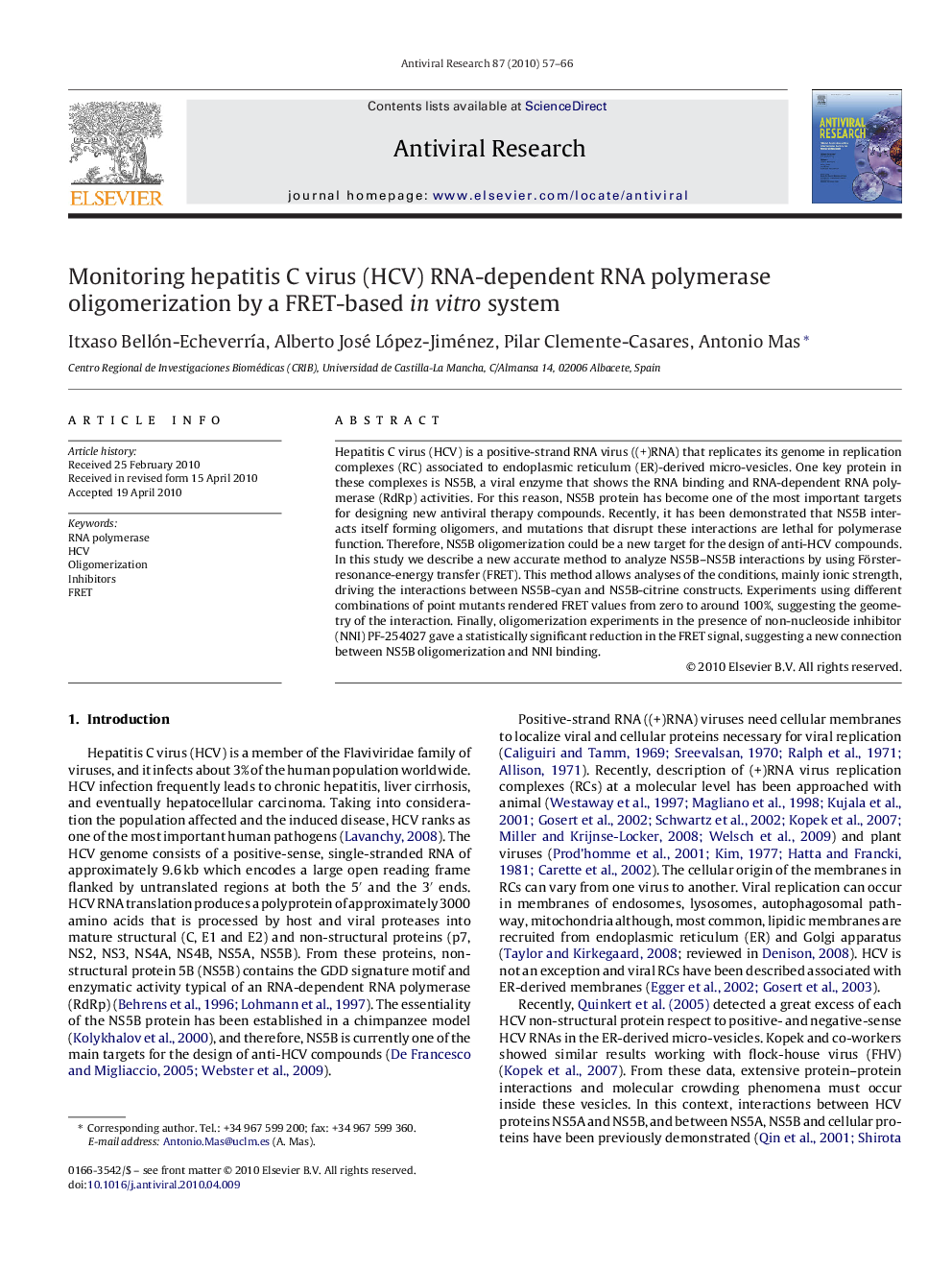| Article ID | Journal | Published Year | Pages | File Type |
|---|---|---|---|---|
| 2510726 | Antiviral Research | 2010 | 10 Pages |
Hepatitis C virus (HCV) is a positive-strand RNA virus ((+)RNA) that replicates its genome in replication complexes (RC) associated to endoplasmic reticulum (ER)-derived micro-vesicles. One key protein in these complexes is NS5B, a viral enzyme that shows the RNA binding and RNA-dependent RNA polymerase (RdRp) activities. For this reason, NS5B protein has become one of the most important targets for designing new antiviral therapy compounds. Recently, it has been demonstrated that NS5B interacts itself forming oligomers, and mutations that disrupt these interactions are lethal for polymerase function. Therefore, NS5B oligomerization could be a new target for the design of anti-HCV compounds. In this study we describe a new accurate method to analyze NS5B–NS5B interactions by using Förster-resonance-energy transfer (FRET). This method allows analyses of the conditions, mainly ionic strength, driving the interactions between NS5B-cyan and NS5B-citrine constructs. Experiments using different combinations of point mutants rendered FRET values from zero to around 100%, suggesting the geometry of the interaction. Finally, oligomerization experiments in the presence of non-nucleoside inhibitor (NNI) PF-254027 gave a statistically significant reduction in the FRET signal, suggesting a new connection between NS5B oligomerization and NNI binding.
